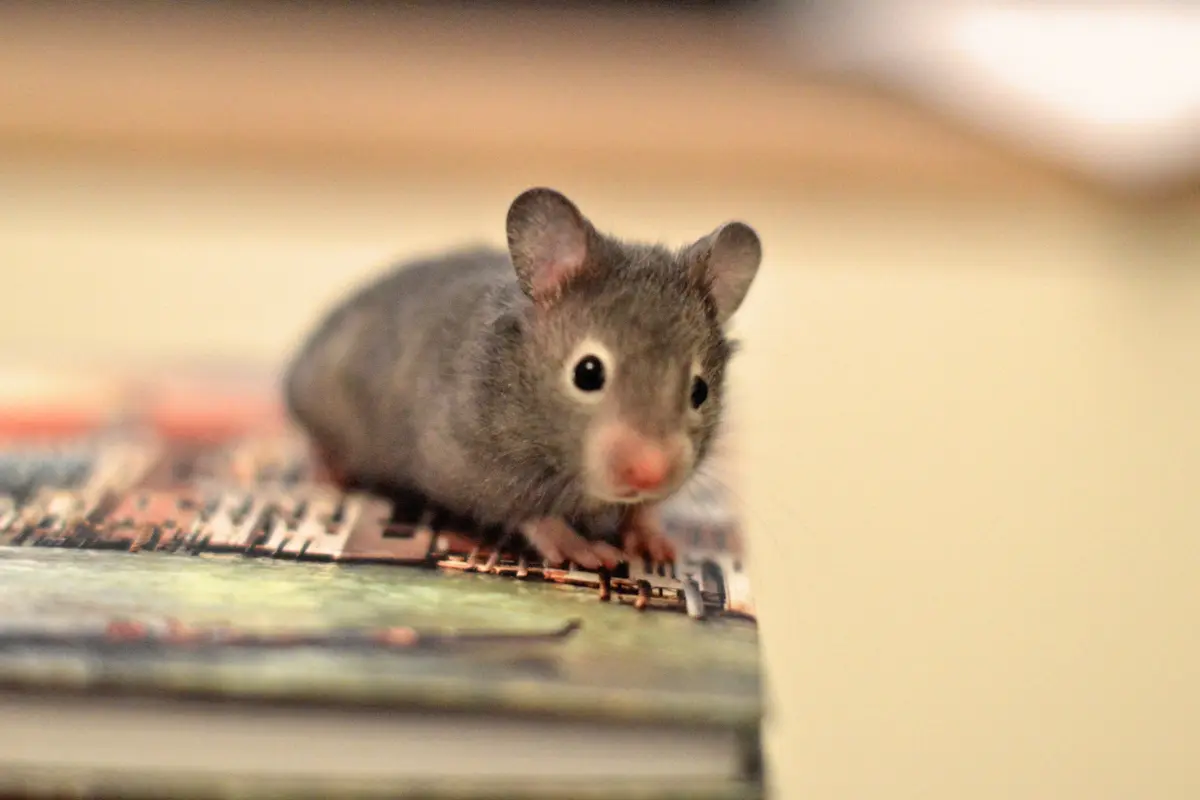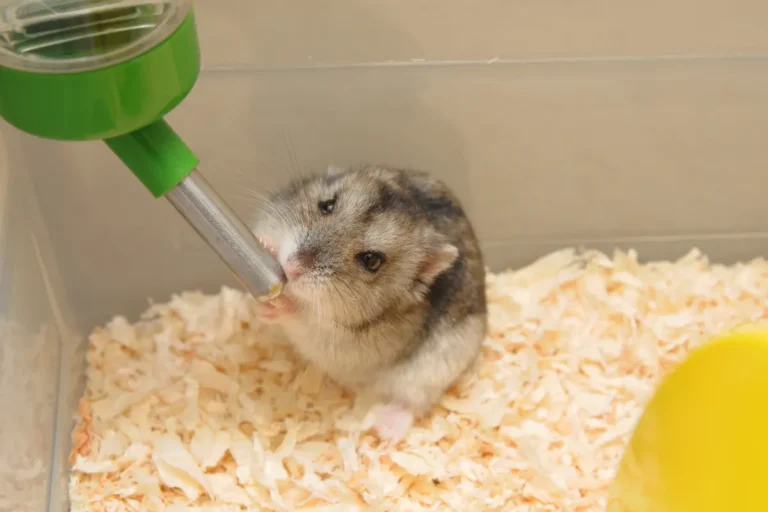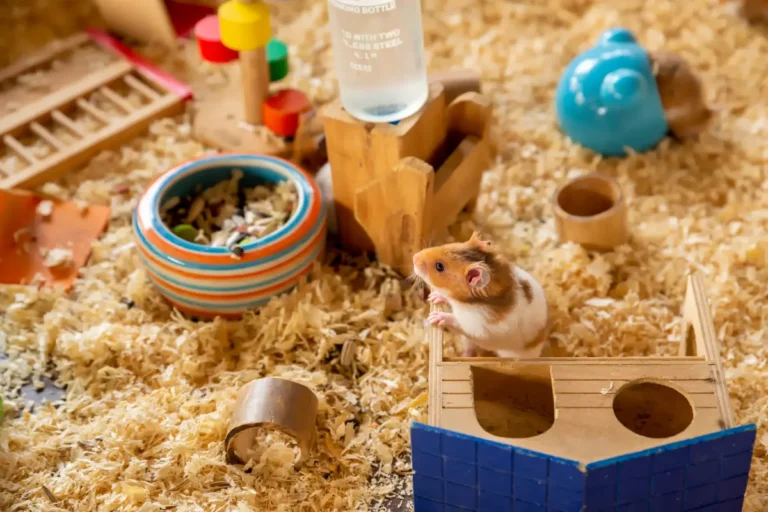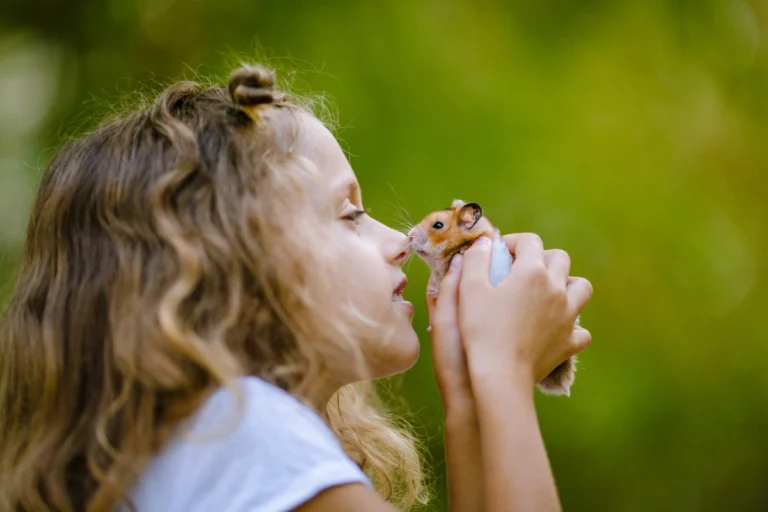How to Enrich Your Hamster’s Life: 6 Must-Try Activities
Ensuring your hamster’s happiness and well-being goes beyond just providing food and water—it’s about creating an environment that allows them to express natural behaviors. Enrichment is key to this. Here’s a simple guide to different types of hamster enrichment that can make a big difference in your pet’s life.
1. Food and Foraging
In the wild, hamsters don’t have their food handed to them on a silver platter. Instead, they must use their senses, particularly their sense of smell, to find and forage for food. This natural behavior can be replicated in captivity to provide both mental and physical stimulation for your hamster.
Scatter Feeding
One of the easiest ways to enrich your hamster’s feeding routine is by practicing scatter feeding. Rather than using a traditional food dish, simply sprinkle your hamster’s food around the cage.
This encourages them to use their sense of smell to search for their meals, just like they would in the wild. Not only does this make mealtime more interesting, but it also allows your hamster to engage in natural foraging behavior.
Making Food Harder to Reach
Another fun way to enhance your hamster’s foraging experience is by placing their food in harder-to-reach areas. You can hide food inside tunnels or elevated spots within the cage.
This gives them the chance to climb or stretch to get their food, which provides additional physical exercise and keeps them mentally engaged.
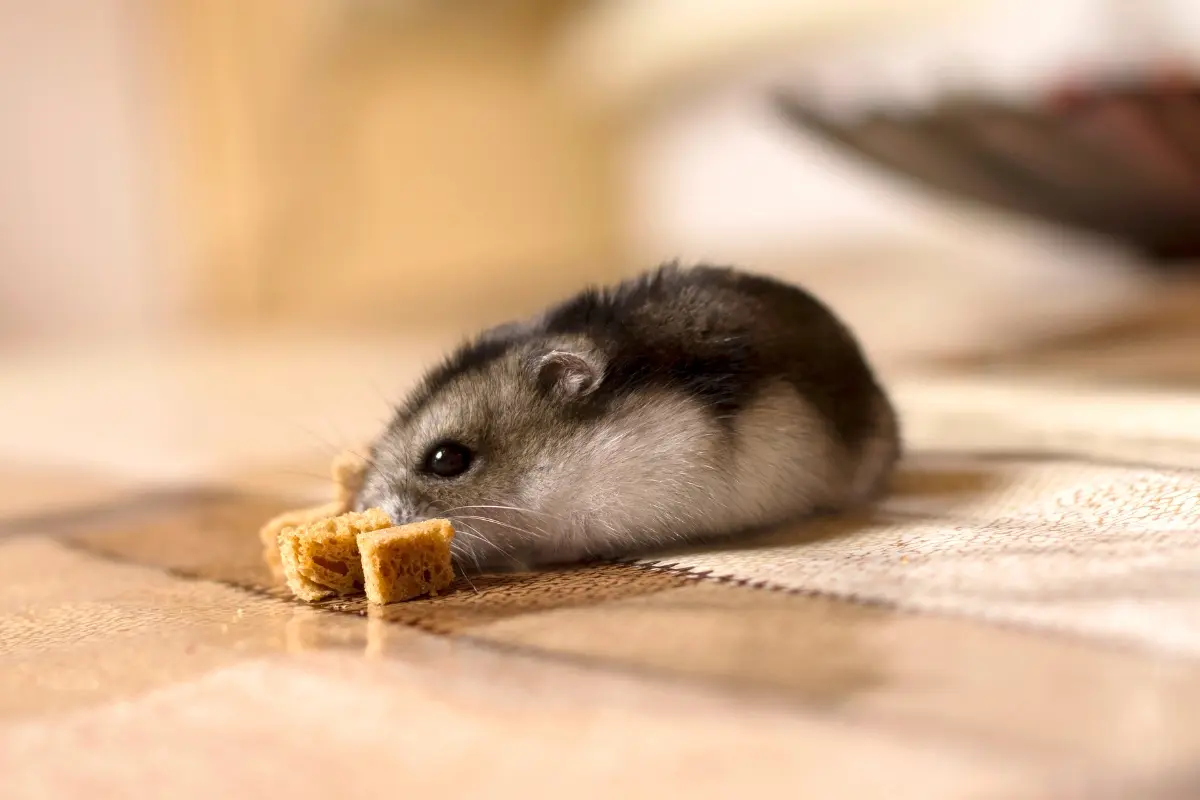
Sprays and Forage Toys
For even more enrichment, consider adding food sprays. These are dried plants and seeds that hang from the top of the cage, making it difficult for your hamster to simply grab the food. They’ll have to work a little harder to pick the seeds off the spray, adding both physical and mental stimulation.
For a creative approach, you can also use forage toys. These toys are designed to hold food and require your hamster to manipulate the toy to get to the treat inside. This offers both a challenge and a reward, making mealtime much more exciting.
Herbs and Fresh Foods
In addition to their regular food, sprinkling hamster-safe herbs, flowers, and leaves around the cage is another form of enrichment. Not only do they offer new smells, textures, and tastes, but they are also a great source of fiber.
Hamsters enjoy nibbling on these natural treats, and they’re an easy way to add variety to their diet. Just be sure to add these about once a week to keep things fresh and exciting.
2. Deep Bedding for Digging and Burrowing
In the wild, hamsters spend a significant amount of time underground, creating intricate tunnel systems known as burrows. These burrows are not just places to sleep but serve as multi-functional spaces for hiding food, going to the toilet, and escaping predators. Recreating this natural behavior in captivity is crucial for your hamster’s well-being, and deep bedding is one of the best ways to do so.
How Deep Should the Bedding Be?
Ideally, you want to provide at least 8 inches of bedding, but many hamster owners, including myself, recommend using over 10 inches of bedding. This allows your hamster plenty of space to dig and create burrows that feel secure.
If you can’t provide deep bedding throughout the entire cage, at least provide a section with deep bedding to encourage burrowing. The more space your hamster has to dig, the happier and healthier they will be.
Choosing the Right Bedding
Not all bedding types are created equal when it comes to burrowing. Soft, supportive bedding is essential to help your hamster dig tunnels that don’t collapse.
Paper-based bedding, like shredded paper or paper pulp, and soft wood bedding such as spruce are excellent options for tunnel-building. These bedding types can be compressed and shaped, allowing your hamster to create stable burrows.
Creating a Stable Burrow
Once you’ve provided deep bedding, the next step is ensuring your hamster’s burrows remain stable. To do this, gently compress the bedding by pressing it down.
This creates a solid foundation for tunnels, so they don’t collapse easily. The more stable the burrow, the more enjoyable it will be for your hamster to dig and explore.
Burrow Starters: Helping Your Hamster Get Started
If you notice that your hamster isn’t burrowing, you can help them out by adding burrow starters. Small items like cork tunnels or bendy bridges can be placed halfway into the bedding.
These items create the initial hole for your hamster to dig around and expand, encouraging them to create a more intricate tunnel system.
What to Do If Your Hamster Isn’t Burrowing
- If your hamster still refuses to burrow despite having deep bedding, it could be a sign that the bedding type isn’t ideal. Make sure you’re using a material that allows tunnels to form. If hemp is the only available bedding, layering it with soft hay can help. Also, try compressing the bedding to provide more stability.
3. Sand Baths for Grooming and Fun
Sand baths are not just an optional luxury for hamsters; they are an essential part of their care routine. Providing a sand bath for your hamster mimics this natural behavior and offers both grooming benefits and mental stimulation.
Choosing the Right Sand
It’s crucial to use the right type of sand for your hamster’s bath. Not all sands are safe for hamsters. Here’s a breakdown of the best options:
- Children’s Play Sand: This is a popular choice for hamsters. It’s fine, soft, and safe as long as it’s sifted and sanitized before use. Make sure the sand doesn’t contain added chemicals or dyes.
- Reptile Sand: Another safe option, provided it’s free from added calcium or dyes. Reptile sand is often available at pet stores and is designed to be safe for small animals.
Avoid:
- Beach Sand: This can contain salt, which is harmful to hamsters.
- Construction Sand: It often has sharp particles that can hurt your hamster’s skin.
- Chinchilla Dust: While chinchillas use dust to bathe, hamster lungs are more sensitive to fine dust particles, which can cause respiratory issues.
How Often Should You Provide a Sand Bath?
Most hamsters will enjoy a sand bath a few times a week, but you can adjust the frequency based on your hamster’s grooming needs. If you notice your hamster’s fur becoming oily or unkempt, it’s time to offer them a bath.
4. Hideouts for Safety and Comfort
In the wild, hamsters are prey animals, and they instinctively seek out dark, enclosed spaces where they can feel protected from potential threats. Providing proper hideouts in your hamster’s cage not only fulfills this natural need for security but also contributes to their overall well-being and happiness.
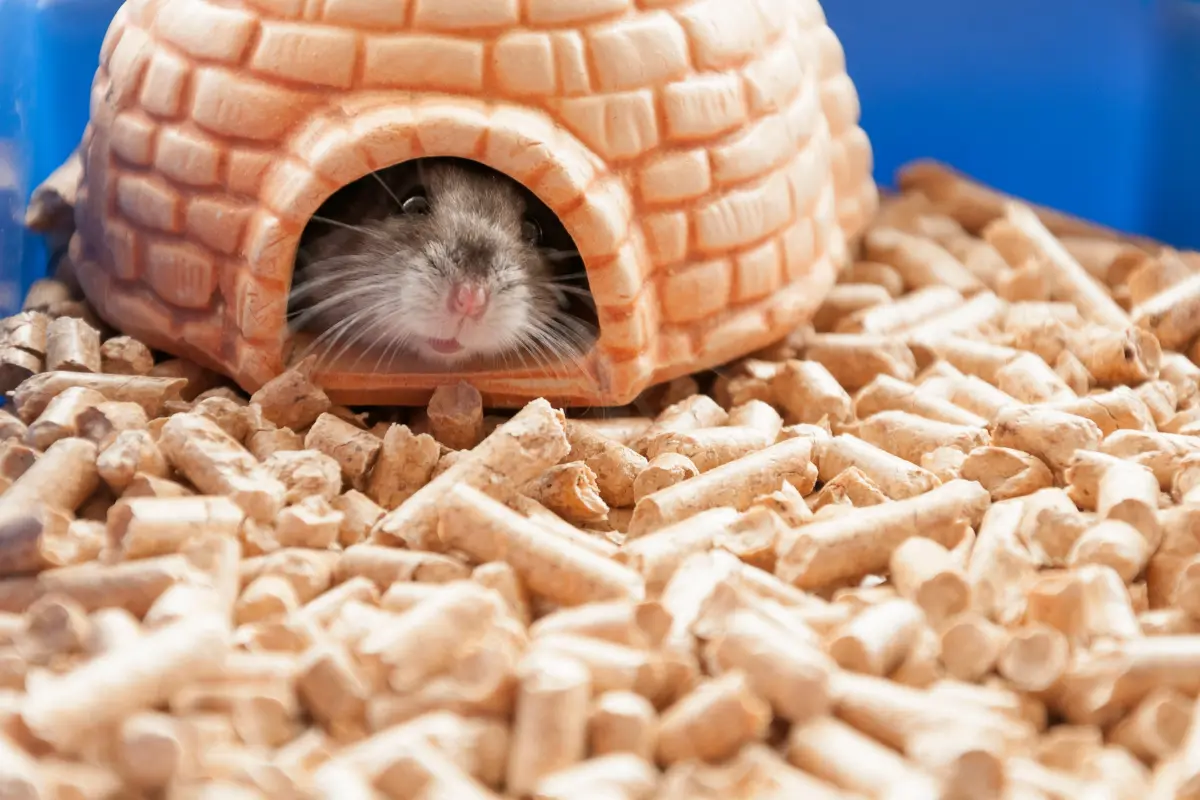
Choosing the Right Hideout
There are various types of hideouts you can choose for your hamster, and the key is to find one that suits your hamster’s personality and needs. Here are some factors to consider when selecting hideouts:
1) Size of the Hideout: Make sure the hideout is the right size for your hamster. A hideout that is too small will make your hamster feel cramped, while one that is too large may not provide enough warmth or comfort. Syrian hamsters need a larger hideout (at least 9 cm in diameter), while dwarf hamsters can get by with slightly smaller hideouts (around 5 cm in diameter).
2) Material: Look for hideouts made from safe, non-toxic materials like wood or ceramic.
3) Structure and Design: Some hideouts are single-chamber, while others have multiple rooms, allowing your hamster to roam and explore. Multi-chamber hideouts can provide more space and variety, which encourages natural behaviors such as nesting, hiding food, and retreating when they feel threatened.
How Many Hideouts Should You Have?
Ideally, you should have at least two hideouts per hamster, one for sleeping and one for storing food or taking shelter. If you have a multi-level cage, consider adding hideouts on different levels to give your hamster a variety of places to retreat to. This will mimic the variety of spaces hamsters would have in the wild, such as burrows or safe spots in trees.
5. Tunnels, Bridges, and Branches for Exploration
Hamsters are natural explorers, driven by curiosity and a desire to navigate their environment. To replicate this natural behavior in captivity, it’s essential to provide enrichment through tunnels, bridges, and branches.
These elements not only enhance their environment but also keep them mentally and physically stimulated, leading to a happier and healthier hamster.
Tunnels: The Gateway to Adventure
Tunnels are one of the most exciting additions to any hamster cage, providing both a place for hiding and an opportunity for exploration.
In the wild, hamsters use tunnels as burrows, where they sleep, store food, and escape from predators. By adding tunnels to their cage, you give your hamster a chance to engage in these natural behaviors.
Types of Tunnels:
- Plastic Tubes: These are widely available and come in various sizes. Plastic tunnels can be arranged in different ways, allowing you to create intricate mazes and pathways. However, make sure the tubes are not too narrow for your hamster to move through comfortably.
- Cardboard Tubes: A great DIY option, cardboard tubes from paper towel or toilet paper rolls can be used to create tunnels that your hamster can crawl through. These are inexpensive, easy to replace, and safe for chewing.
- Flexible Tubing: Flexible, bendable tubes offer a fun way to create tunnels that twist and turn, allowing your hamster to explore in a dynamic and ever-changing space. These are perfect for setting up mazes or adding variety to your hamster’s enclosure.
Safety Tip: Always check the size of the tunnel to make sure your hamster can easily fit through. Avoid tunnels with sharp edges or gaps that could trap their paws or legs.
Bridges: A Hamster’s Personal Pathway
Bridges offer hamsters a way to cross different levels of their cage or navigate between areas, simulating the natural climbing and walking behavior they would experience in the wild. Bridges also serve as a great opportunity for your hamster to exercise their balance and coordination.
Types of Bridges:
- Wooden Bridges: Wooden bridges are durable and provide a natural texture for your hamster to climb. Make sure the wood is safe and non-toxic (avoid pine and cedar). Wooden bridges can also be chewed, which helps with your hamster’s dental health.
- Plastic Bridges: These are lightweight, easy to clean, and available in a variety of shapes and sizes. Plastic bridges can be used to connect different areas of the cage or create ramps to higher platforms.
- Hammock Bridges: Some hamster owners use fabric hammocks as bridges, providing a soft, cozy space for their hamster to rest or cross. These are especially suitable for dwarf hamsters who may not be as adept at climbing harder surfaces.
Safety Tip: Ensure that the bridge is stable and securely attached to the cage so it doesn’t wobble or collapse, potentially injuring your hamster.
Branches: Bringing the Outdoors Inside
Branches are a fantastic way to add variety to your hamster’s habitat, especially if you’re looking to replicate a more natural, forest-like environment. In the wild, hamsters are known to climb and dig around in their natural burrows, so offering them branches encourages this instinctive behavior.
Types of Branches:
- Untreated Wood: Safe branches such as those from apple, willow, or aspen trees are ideal for your hamster. Ensure they are untreated and pesticide-free. You can place these branches across the cage or use them to create climbing structures.
- Tree Trunks or Logs: Small tree trunks or logs can be placed horizontally or vertically, giving your hamster a natural, rugged surface to explore. These can also be used as bridges, ramps, or tunnels.
- Branch Tunnels: A creative addition, branch tunnels allow your hamster to crawl through them, just like natural burrows. These can be arranged to form an intricate network of passageways.
Safety Tip: Be sure to remove any branches with sharp edges or thorny surfaces that could harm your hamster. Also, never use branches from toxic trees, such as cherry, peach, or plum trees, as these can be harmful.
Combining Tunnels, Bridges, and Branches for a Fun-Filled Cage
To create the ultimate hamster habitat, combine tunnels, bridges, and branches into a cohesive setup. You can arrange tunnels to lead into a bridge, or place branches above tunnels to create multiple levels in the cage. This setup offers a mix of vertical and horizontal spaces for your hamster to explore, climb, and burrow through.
6. Platforms for Extra Levels and Safety
Platforms add variety to your hamster’s habitat by creating different levels for them to explore. When placed above the bedding, they also provide cover and can help prevent objects from crushing your hamster if they dig underneath.
However, be mindful of fall height—platforms that are too high can lead to injuries. For dwarf hamsters, a fall height of 10 cm is safe, and for Syrians or Chinese hamsters, 15 cm is ideal. You can easily make your own platforms from safe materials like wood or even cardboard.
Finally, variety is key! Regularly rotating toys, bedding, and enrichment items keeps your hamster’s environment interesting and stimulating. This prevents boredom and encourages physical and mental exercise.
